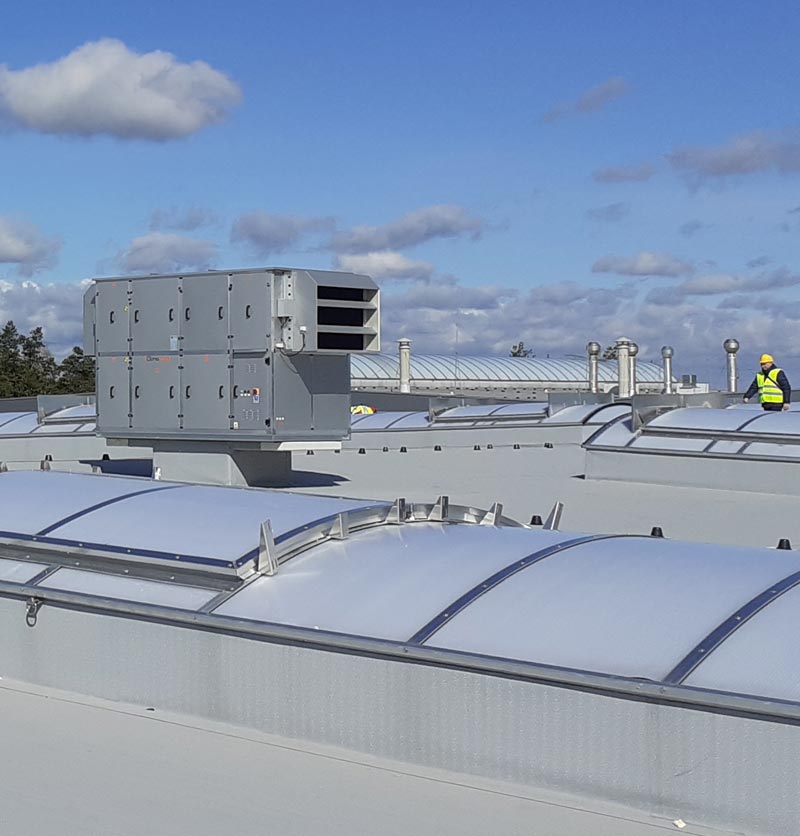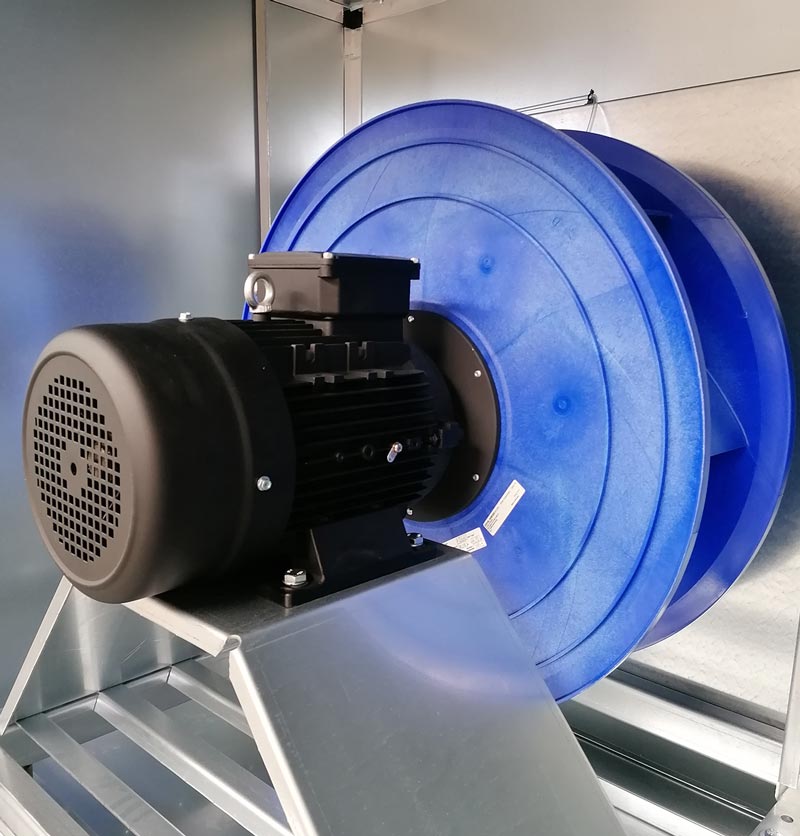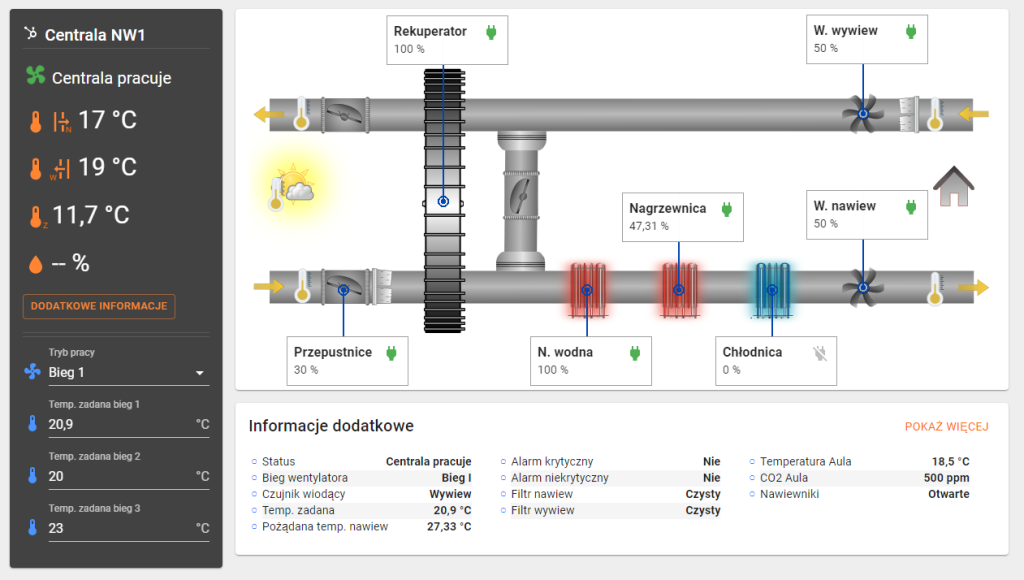Strona główna > Service
Service
Log in to ClimaService
Add a new request
Air handling units are designed to transport air within ventilation systems and condition the supply air to meet required physical parameters.
These units are intended for long-term operation, often under challenging conditions. In this regard, they can be compared to cars, which, like air handling units, require regular inspections, maintenance, and repairs to function properly.
Clima Gold Service
Clima Gold Service supports users of our air handling units throughout the entire lifecycle of the devices.
- We assist during the initial commissioning of the units on-site, along with components within our delivery scope (gas modules, humidifiers, refrigeration systems).
- We train personnel responsible for operating the units on proper handling and maintenance.
- We conduct warranty and post-warranty inspections. Periodic inspections are required twice a year: during the summer and winter seasons. We thoroughly check the unit’s operation in cooling and heating modes.
- Equipment failures can happen – in such cases, please report the issue via the ClimaService platform. Based on the report, the service team will arrange the details and schedule a technician visit.
- We also service devices beyond the warranty period.
We are available to support users of our devices in areas such as:
- Consulting – We provide advice on how to optimize and monitor the operation of the units, reduce energy consumption costs, and remotely manage the air handling unit.
- Monitoring unit performance through the ClimaVisa platform.
- Implementing control systems for older units.
- Modernizing devices.
- Replacing components and supplying spare parts.
Thanks to our extensive network of authorized Clima Gold service centers, we can respond quickly to reports, identify and resolve issues, and conduct maintenance and inspections.
For all inquiries, don’t hesitate to contact us at serwis@climagold.com. Reports of failures or requests for inspections should be submitted via the ClimaService platform.

Correct operation of ventilation units by the customer
The user’s responsibilities include:
- Monitoring the condition of the air handling unit by regularly observing its operation – two inspections are required annually: during the summer and winter seasons. The service team will thoroughly check the unit’s performance in cooling and heating modes.
- Maintaining complete documentation and ensuring timely inspections.
- Operating the unit in accordance with the manufacturer’s instructions.

How to Minimize the Risk of Ventilation Equipment Failures
Filter Replacement
Filters should be replaced as needed. Typically, replacement is performed by an authorized service provider during periodic inspections of the air handling unit. Replacing filters once every six months is sufficient if the unit operates in relatively clean air (such as in residential or office spaces). If the unit handles more polluted air, filters should be replaced more frequently.
Although the replacement process is not complicated, it is essential to ensure that filter pockets are always positioned vertically and that there are no gaps between the filters and the profiles after replacement. Filters must fit snugly into the guides and against each other. The size, filtration class, and quantity of filters are specified in the Air Handling Unit Selection Card and on the unit’s nameplate.
Monitoring Ducts and Valves
Regularly check that all valves and ducts in the unit are functioning correctly and ensure there are no leaks or damage.
Monitoring Operating Parameters
Continuously monitor the unit’s operating parameters, such as temperature, pressure, and airflow levels. This helps prevent overloads and ensures efficient operation.
Maintaining Cleanliness in the Unit and Surroundings
Keep the unit and its surrounding area clean to ensure optimal performance and to reduce wear and tear.
Performance Testing
Regularly test the unit to ensure it operates according to specifications and meets user expectations.
By following these practices, you can maintain optimal efficiency, extend the unit’s lifespan, and prevent unexpected issues.

Service contracts
Lorem ipsum dolor sit amet consectetur, adipisicing, elit. Dolorum, unde est. Nihil dolore eos eius inventore at, modi ex quas iste temporibus dignissimos consequuntur quia, hic. Maxime ab, laboriosam iure soluta natus sequi. Modi, a, cum! Expedita porro ipsa mollitia nulla quae vel quia odio, quibusdam repellat nobis ipsam architecto ut suscipit commodi nihil, neque harum. Sequi hic molestiae, eaque veniam odio blanditiis fugit sed tempore totam nihil natus nisi, aut doloribus facere cupiditate laudantium sint, explicabo autem ut officiis corporis sapiente rerum temporibus? Libero dignissimos delectus culpa ea dolorem quia esse soluta ipsa, nam iste ex consectetur, eum ullam fugit velit sunt non provident commodi aspernatur omnis voluptate odio, deleniti? Rerum nam repellendus, ab omnis eos alias id, dolore non ad est, quis voluptatibus. Quo nam corporis reiciendis fugit omnis voluptatem vitae a atque quia. Qui voluptatibus, quibusdam libero numquam ratione tempora ducimus nam nulla deleniti sint velit sapiente.

Warranty agreements
The factory warranty covering Clima Gold devices is provided in the following options:
- 36 months (from the date of sale), provided that a service agreement is signed with the guarantor. The agreement includes paid commissioning, service inspections, and operational training.
- 24 months (from the date of sale), in the absence of a service agreement with the guarantor.
Submitting a Fault Report
The basis for accepting a fault report is the proper completion of the Fault Report Card. The card form is included in the device documentation.
The Fault Report Card should include the following information:
- Exact address of the facility.
- Details of the company reporting the fault.
- Contact information of the person who noticed the fault or has constant access to the air handling unit.Device serial number (C……/…). The number can be found on the unit’s nameplate, in the device documentation, or on the warranty card.
- Detailed description of the fault.
